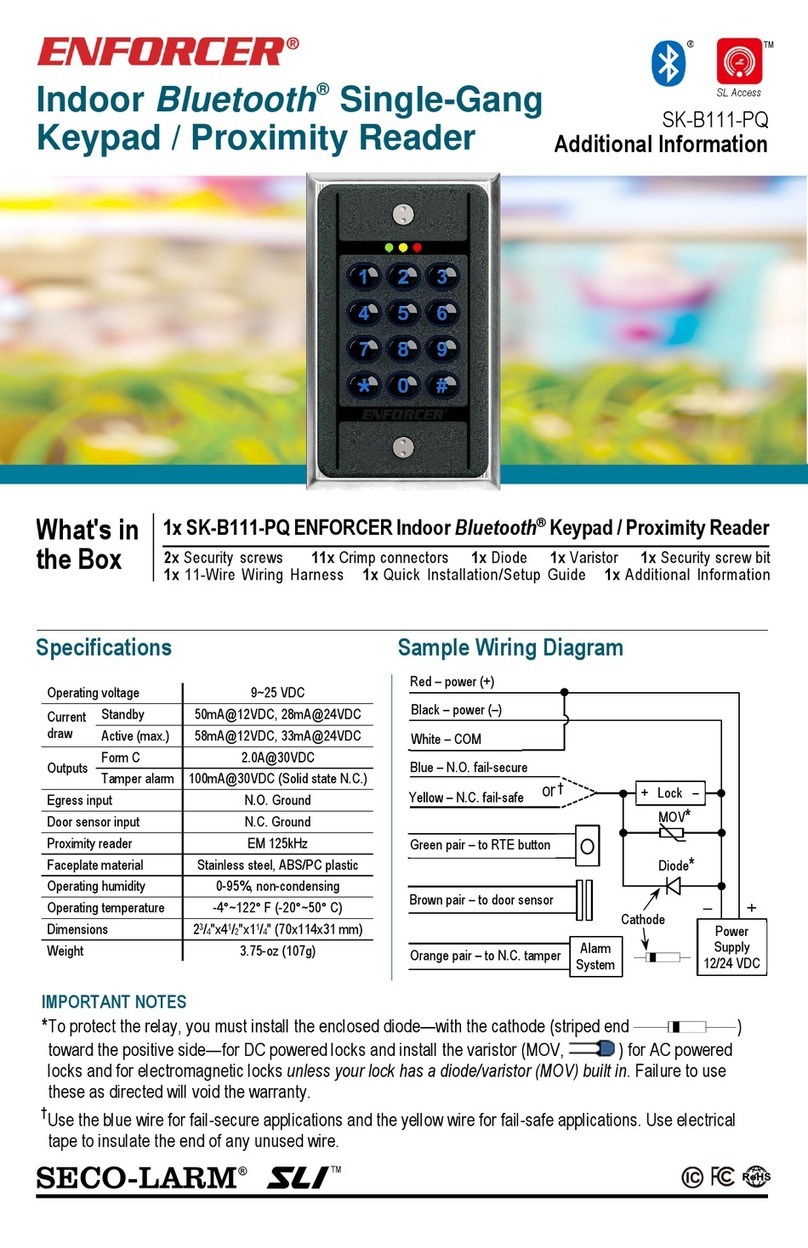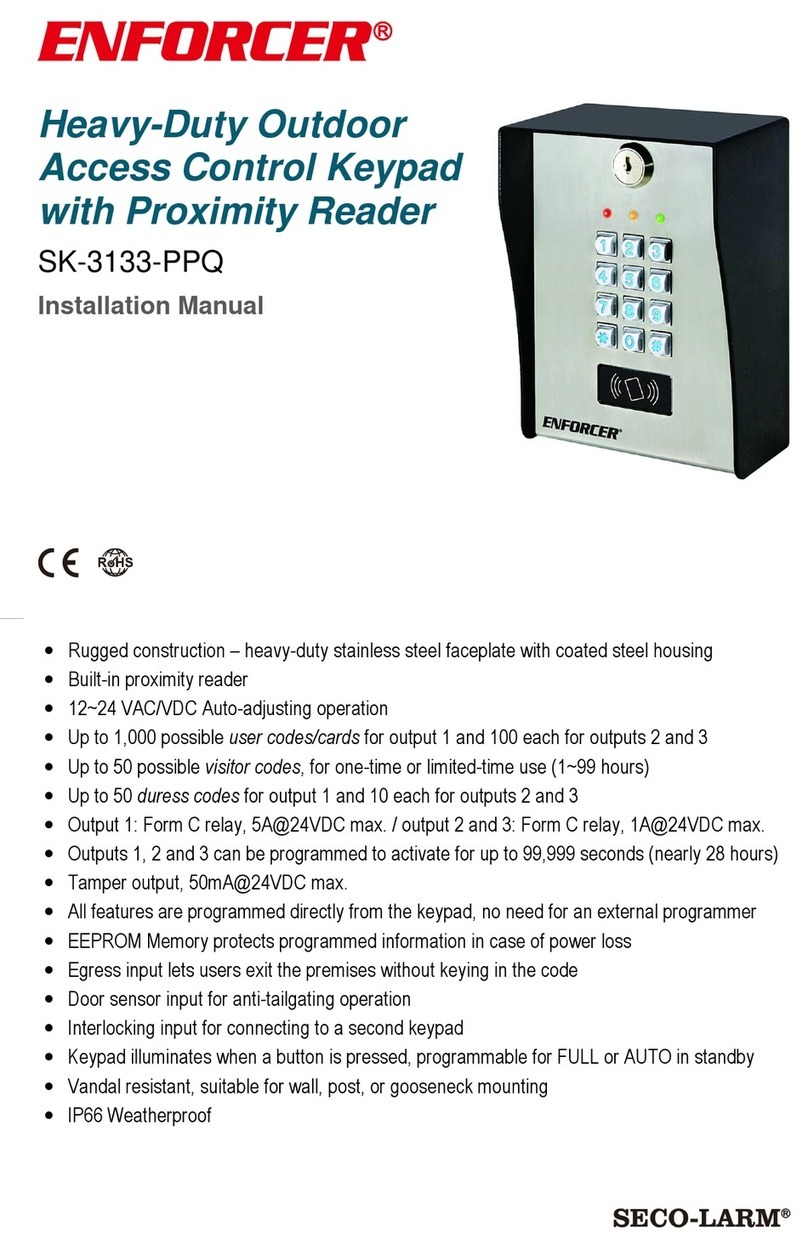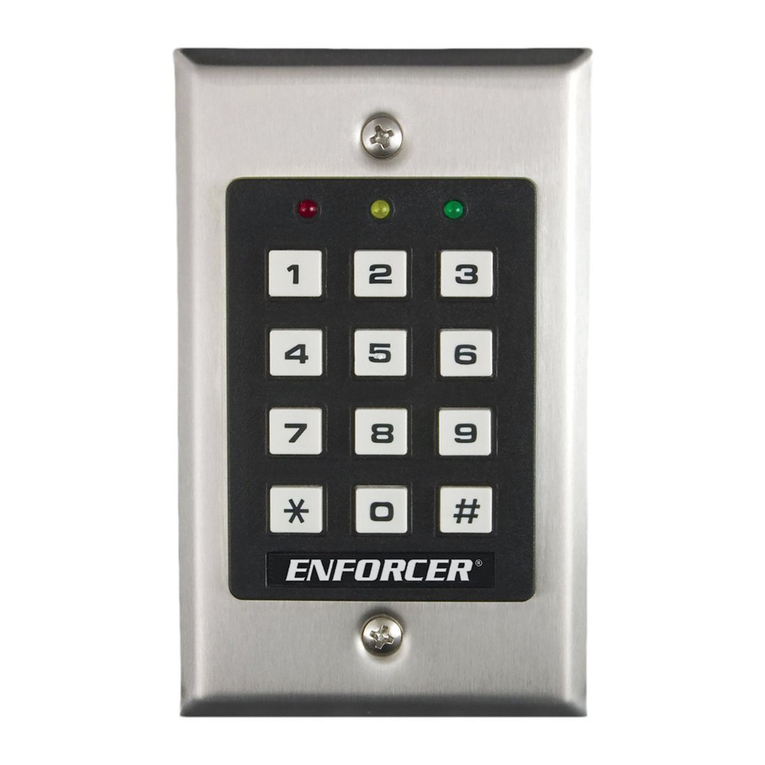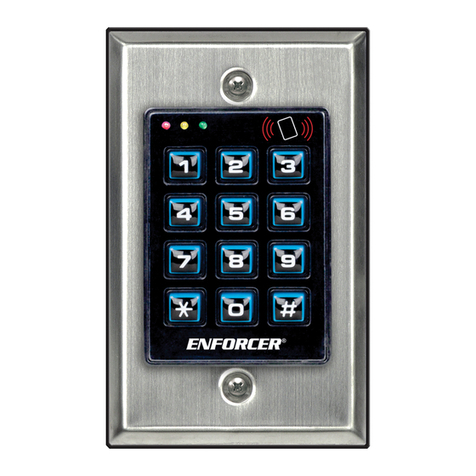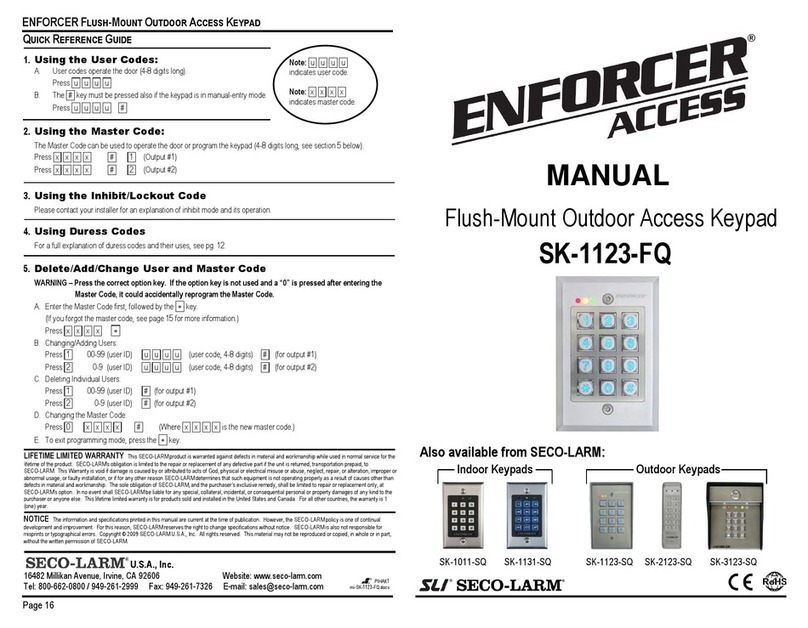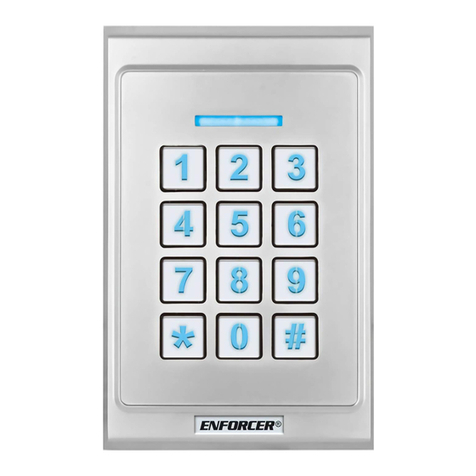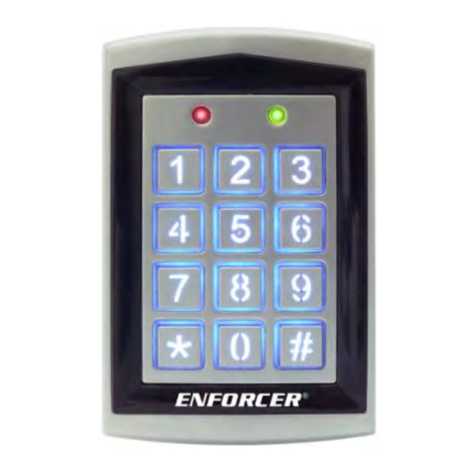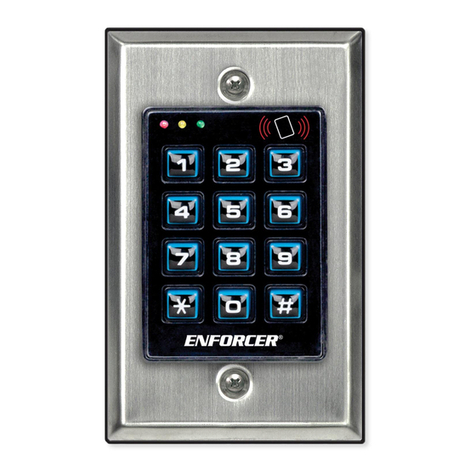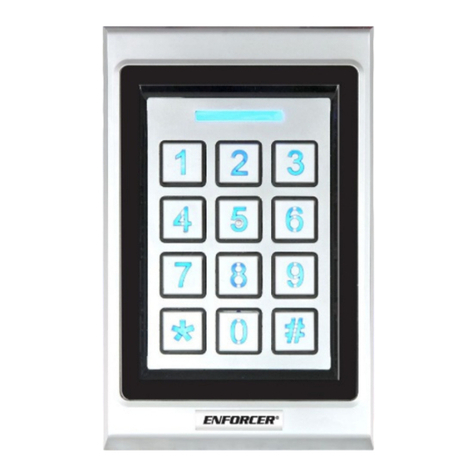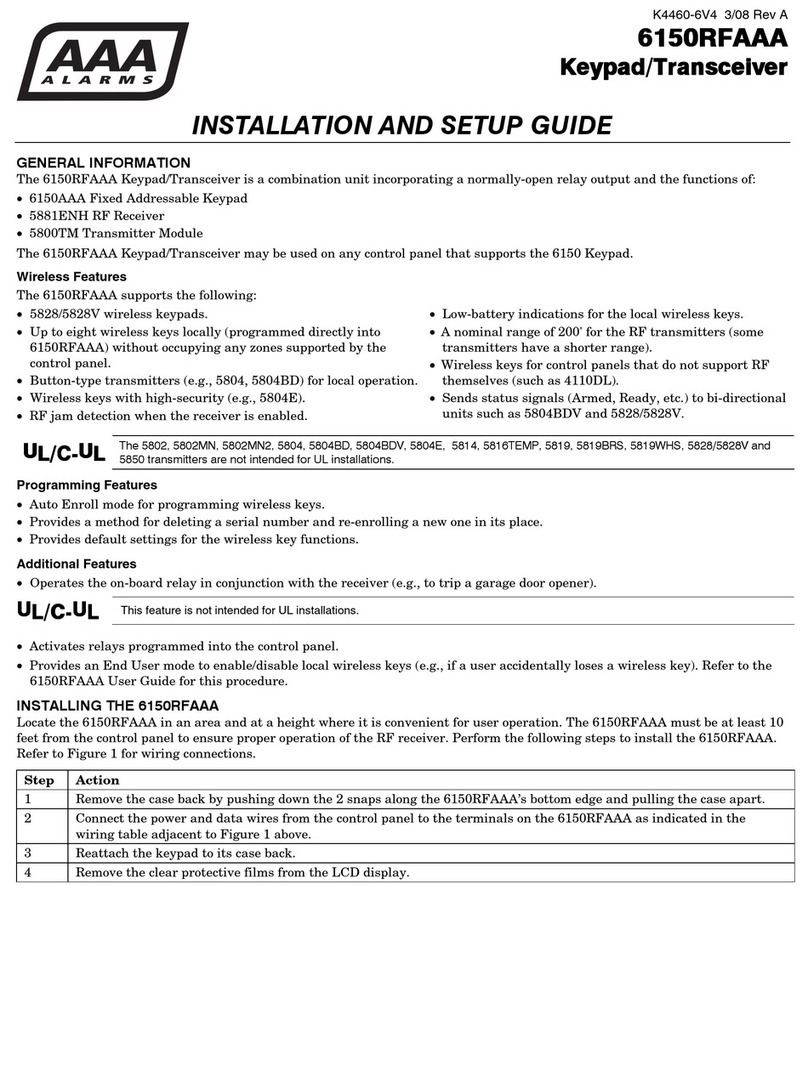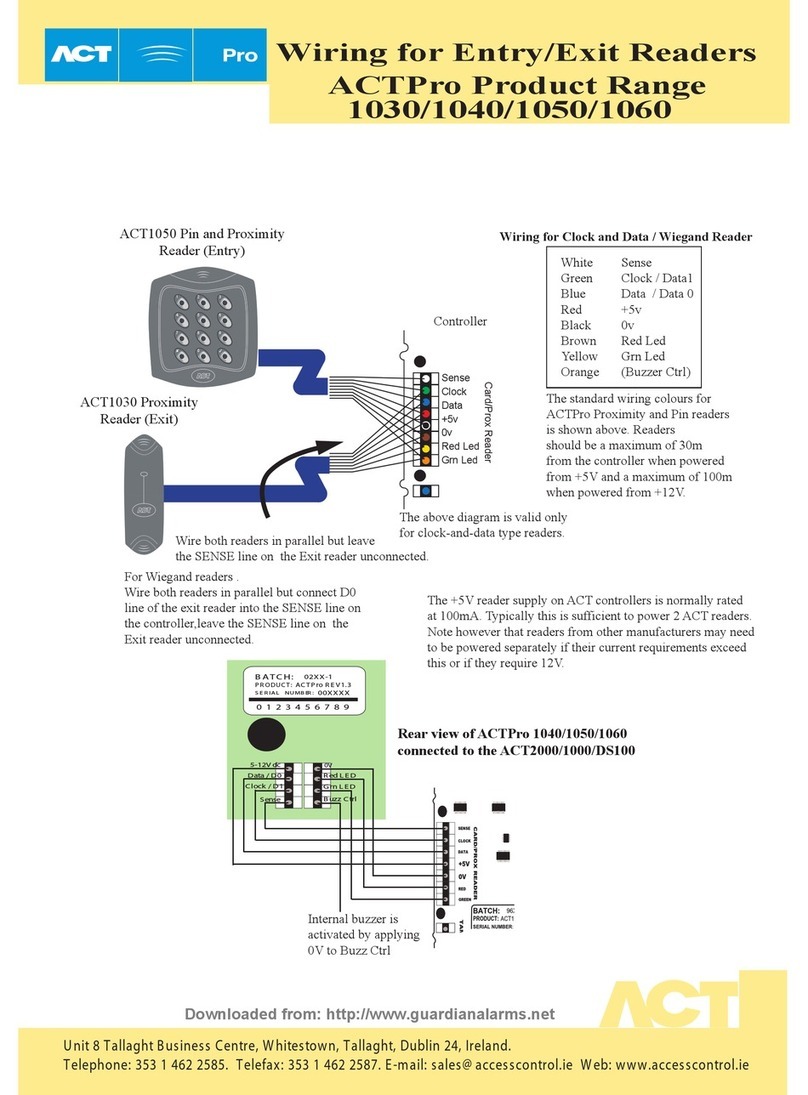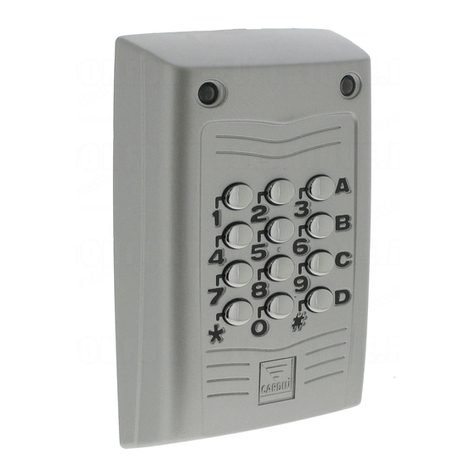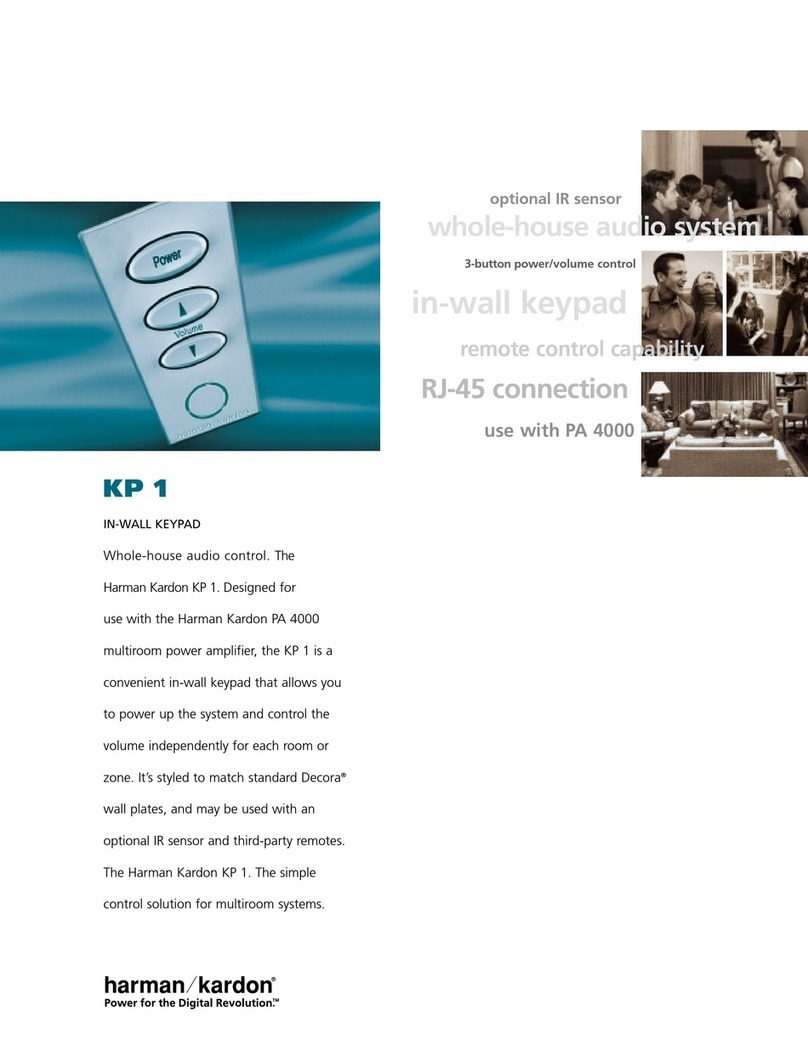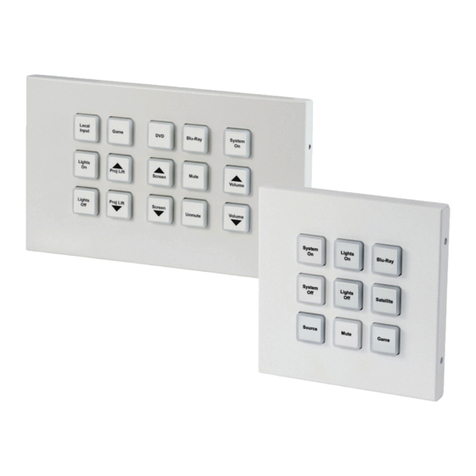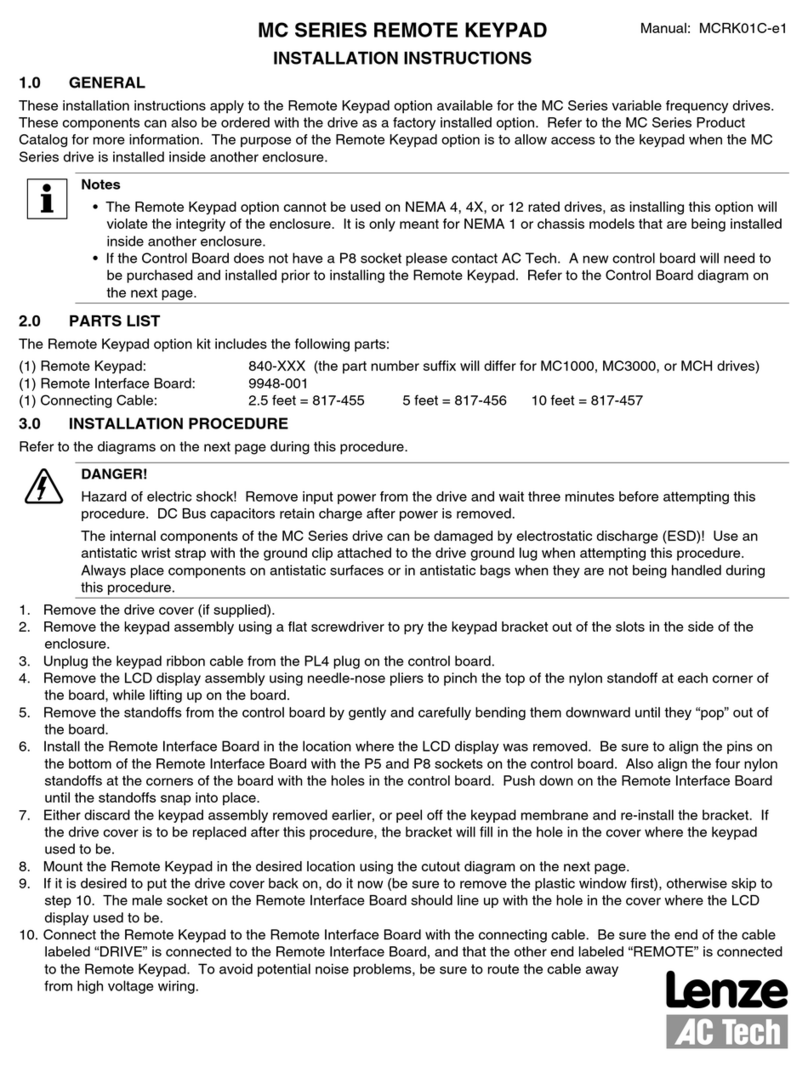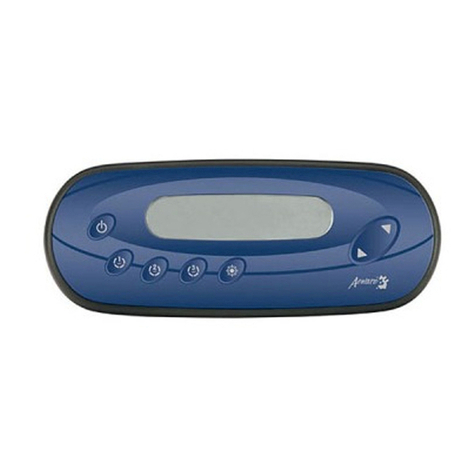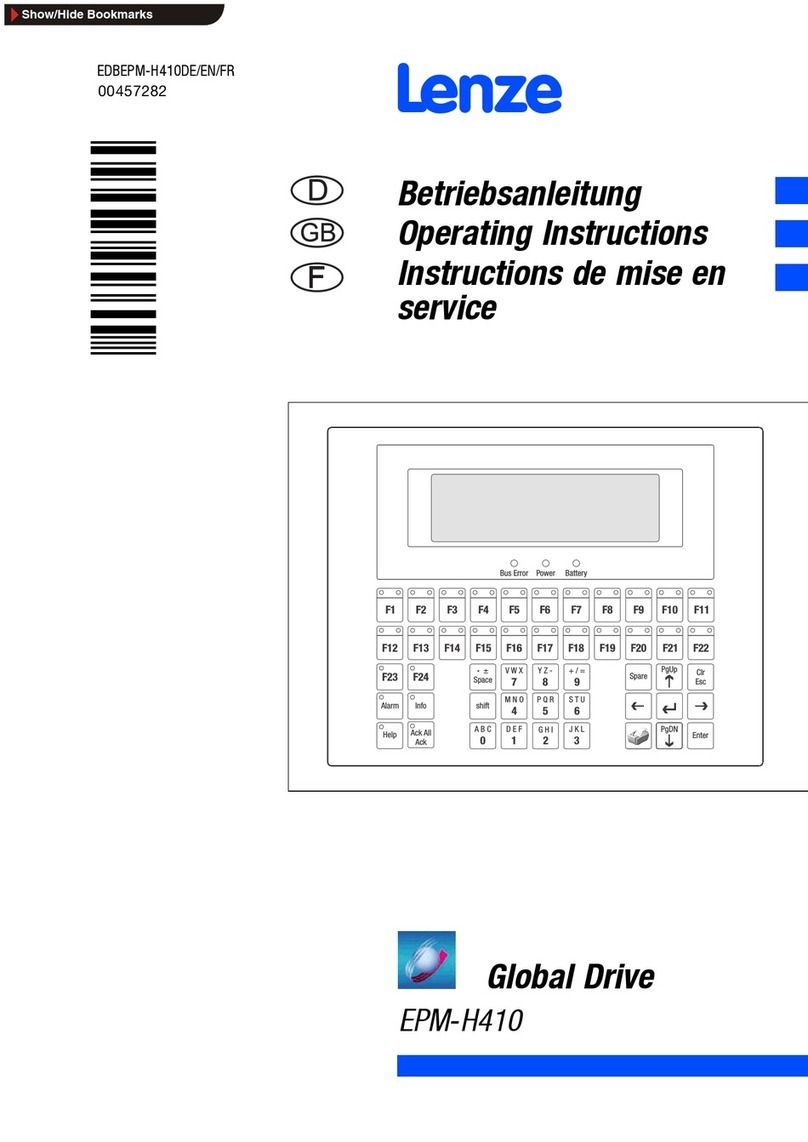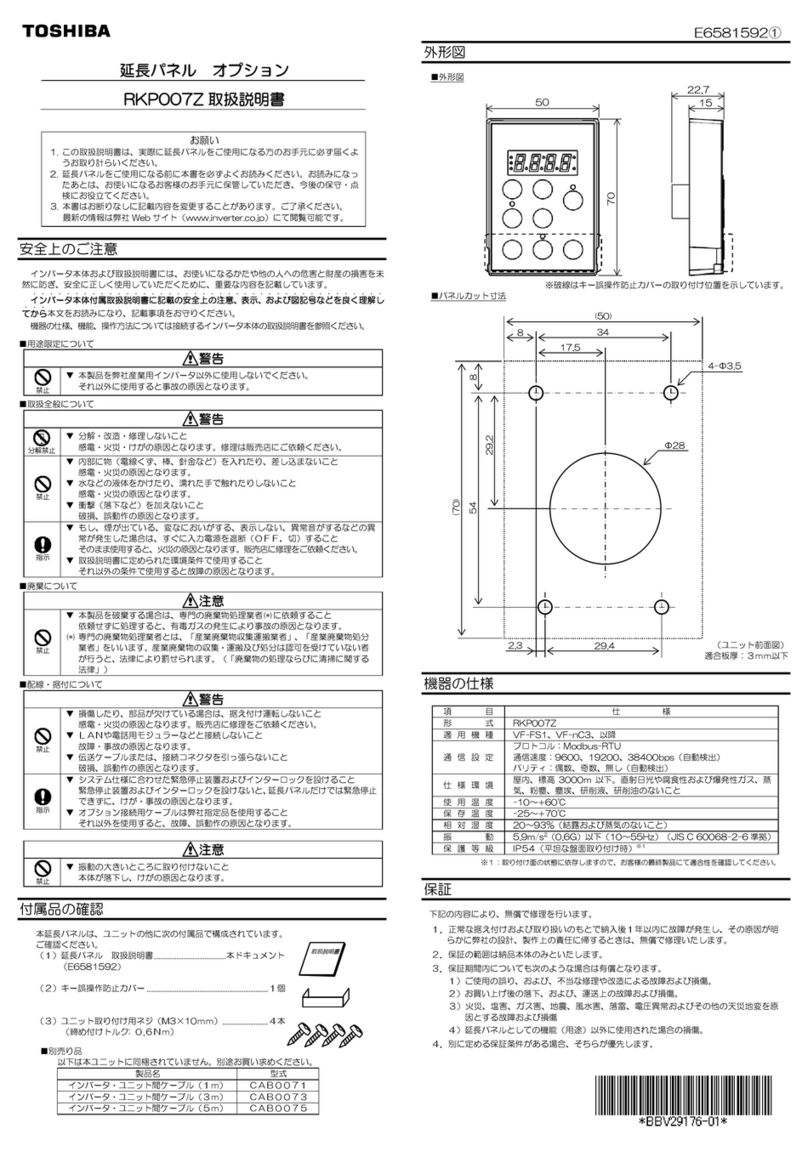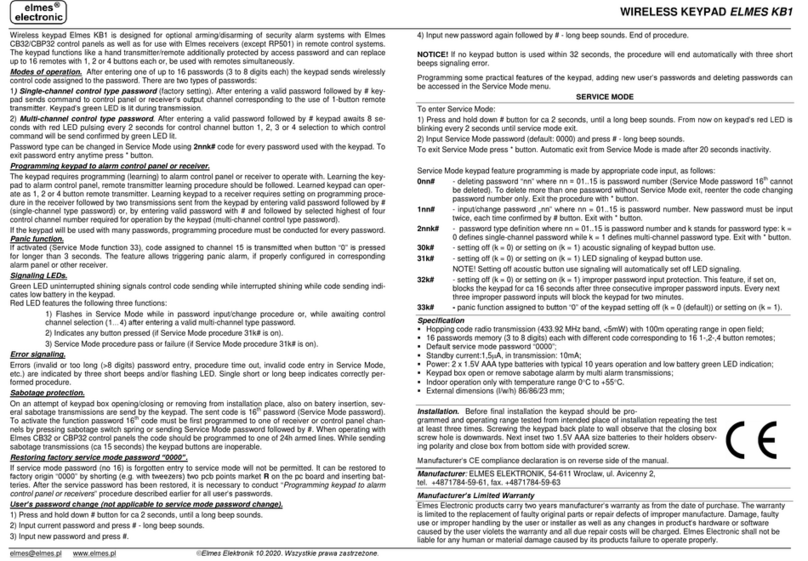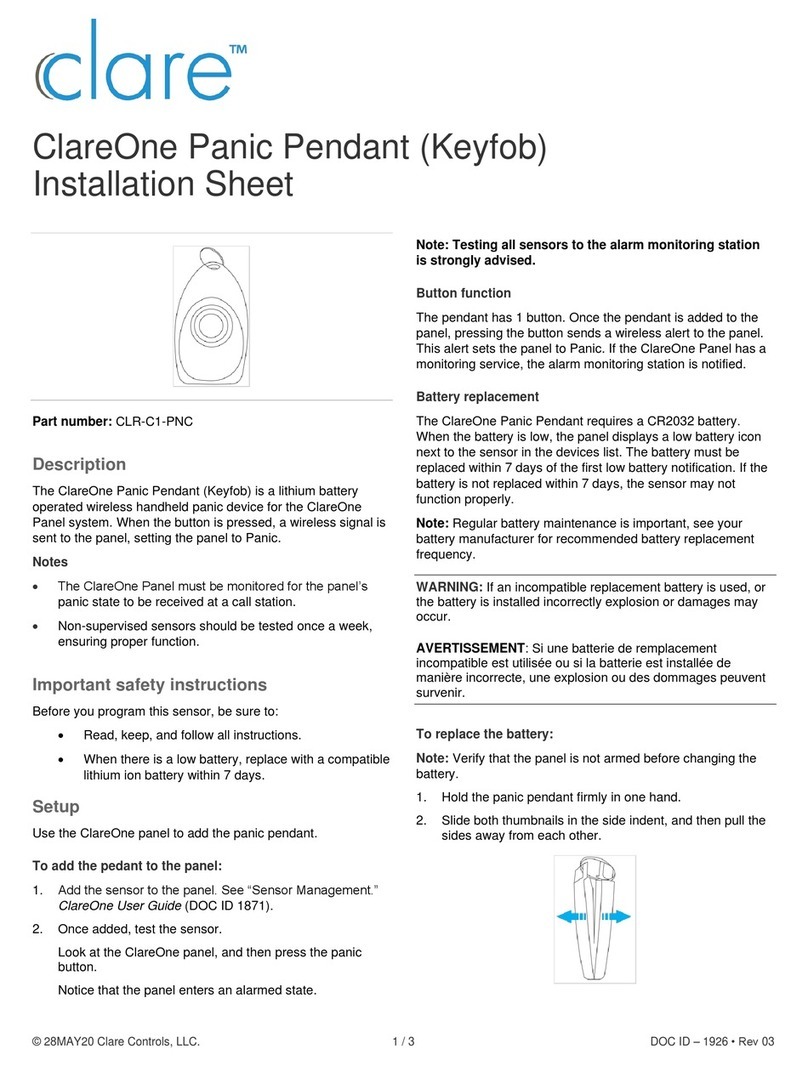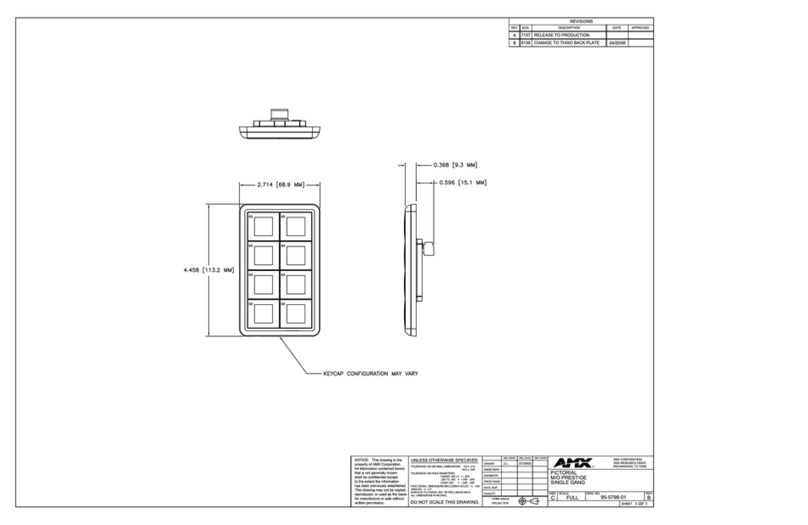
ENFORCER Split Series Keypad with Proximity Card Reader
4SECO-LARM U.S.A., Inc.
Quick Installation Guide ....................................................................................................................2
Mounting Diagram
............................................................................................................................2
.......................................................................................................................2
...............................................................................................................3
.............................................................................................................................4
...........................................................................................................................................5
...................................................................................................................................5
.......................................................................................................................................6
...........................................................................................................................................6
........................................................................................................................................6
LED Indicators and Sounds
..............................................................................................................7
................................................................................................................................8
– Keypad .................................................................................................................8
– Controller .............................................................................................................9
.................................................................................................................10~11
Sample Applications for Auxiliary Terminals
............................................................................12~13
........................................................................................................14~15
Programming Format and Default Programming Values
................................................................16
..............................................................................................................................17
Programming the Master Code
......................................................................................................17
Programming the Super User Code
.........................................................................................18~19
Programming Common User Codes
........................................................................................19~20
Programming User Codes and Proximity Car
ds .......................................................................20~21
Programming Visitor Codes for Output #1
......................................................................................22
....................................................................................................23~24
Programming the Output Mode and Output Timing
........................................................................25
-Time Clock ................................................................................................26
Programming the Output #1 Auto
-Disable Time .......................................................................26~27
-Code System Lock-Up ...........................................................................28
Programming the User Code Entry Mode
......................................................................................28
Programming the Keypad Sounds
..................................................................................................29
Programming the Output Relay Activation Sounds
........................................................................29
Programming the Amber LED Flashing during Standby Mode
....................................................... 30
-Forced-Open Warning and Timing ............................................................30
ogramming the Door-Propped-Open Warning and Delay Time ..................................................31
Programming the Door Open Alarm and Timing
............................................................................31
Programming the Egress Delay/Warning/Alarm
.......................................................................32~33
Direct Access to Programming (DAP)
............................................................................................34
User’s Guide to Operating the SK
-4131-SPSQ ..............................................................................35
..............................................................................................................................................36
Available .................................................................................................................................36
.........................................................................................................................................36
